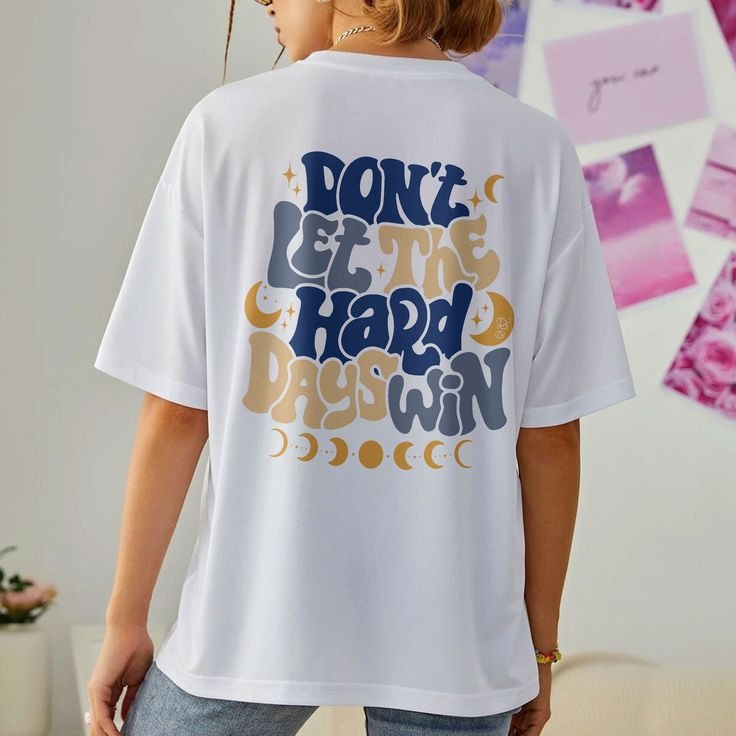Thought for 4 seconds
The journey of the humble T-shirt is a fascinating tale of practicality transformed into cultural icon, of basic garment elevated by innovation, and of simple cotton knit endowed with expressive power. In its earliest incarnation, this garment existed purely for function. Soldiers at the turn of the twentieth century, chafed by heavy wool uniforms in warm climates, adopted short-sleeved, lightweight cotton undershirts to keep cool and wick moisture. These one-piece “union suits” evolved into separate tops and bottoms, and it was the shortsleeved top that caught the imagination of both military and civilians alike. What began as an underlayer soon became outerwear simply because returning soldiers preferred its comfort and ease of movement, wearing their cotton shirts untucked beneath open work shirts, quietly shifting public perception about what was appropriate casual attire.
As the T-shirt emerged as an acceptable article of outer clothing, manufacturers rushed to adapt their production. Cotton jersey fabric — prized for its knit stretch, softness, and breathability — became the norm. Advances in textile machinery allowed factories to pump out jersey by the mile, cutting costs dramatically. Machine-stitched ribbing around the neckline and sleeves kept the shirt from losing shape, while double-stitched hems reinforced wear points. By midcentury, the basic white crew-neck T-shirt served as the canvas for a nascent graphic printing industry. Early silkscreen pioneers recognized that the flat, high-contrast surface of the cotton knit was ideal for bold designs, and soon rock bands, political movements, and small businesses were splashing slogans and images across chests, turning wearers into walking billboards.
Growth of print-on-demand technology in recent decades has democratized this tradition of personal expression. Where once a minimum order of several hundred shirts and screen-printing screens made custom T-shirts the domain of established brands and organizers of large events, today anyone with an idea can upload a design to an online platform and sell one-off prints, paying nothing until a customer’s order triggers production. This shift in manufacturing has enabled micro-entrepreneurs and artists around the world to reach global audiences, offering limited-edition series that reflect niche passions — whether commemorating a beloved cult film, spoofing internet memes, or advocating for environmental causes.
Today’s T-shirts owe their diversity to decades of textile innovation. The classic cotton jersey still reigns supreme, but blends incorporating polyester and rayon abound, bringing wrinkle resistance, faster drying times, and smoother drape. Synthetic fibers such as nylon and polyester, once dismissed as “cheap” and uncomfortable, have shed their negative reputation thanks to moisture-wicking technology and antimicrobial finishes borrowed from athletic apparel. Activewear brands popularized these performance knits, marketing them to hikers, cyclists, and gym-goers who value quick-drying, odor-resistant shirts that maintain shape through repeated wash-and-wear cycles. Meanwhile, eco-conscious consumers have driven the rise of organic cotton, bamboo-derived rayon, and Tencel™, fibers produced under stricter environmental and labor standards. Certifications such as GOTS (Global Organic Textile Standard) and Fair Trade guarantee that cotton is grown without harmful pesticides, workers are paid fairly, and factory effluent is responsibly treated. Conscious shoppers can now trace the lifecycle of their shirt from seed to salvage, selecting products that carry minimal ecological footprints.
In terms of fit and styling, the modest T-shirt has blossomed into a varietal garden. A slim-cut T-shirt, hugging the torso without restriction, offers a modern silhouette that pairs neatly beneath tailored jackets. The oversized boxy cut, with dropped shoulders and ample width, conveys a street-wear aesthetic that has become central to urban fashion and the “normcore” movement’s celebration of everyman sensibility. Crew-necks endure as the archetypal shape, forming a tight ring around the base of the throat, while deep V-necks lend a sense of elegance, perfect for layering under sweaters or sporting jewelry. For women, scoop-neck and boat-neck variations introduce a graceful openness around the collarbone. Sleeve lengths fluctuate from barely-there cap sleeves on women’s tees to extended jersey sleeves that skim elbows, and even raglan sleeves, in which contrasting fabric from neckline to underarm creates a diagonal seam, offering both visual interest and increased range of motion.
A closer look at construction methods reveals numerous ways to elevate a basic shirt. Tubular knitting techniques eliminate the side seam altogether, yielding a smooth, continuous cylinder that resists twisting and chafing. Flat-lock stitching can be applied to seams for a low-profile finish appreciated in athletic gear. Shoulder tape—narrow strips of cotton or synthetic blend sewn into the back of the neck and shoulders—preserves shape and prevents seam stretching. Curved or contoured side seams sculpt the garment for a more tailored feel. On premium offerings, French seams hide raw edges within the fold of fabric to prevent fraying and provide a luxurious finish. All of these incremental improvements contribute to longevity, fit fidelity, and wearer comfort.
Perhaps the most compelling aspect of T-shirts is their role as vehicles for messaging. Early political movements in the 1960s and 1970s adorned shirts with provocative slogans like “Make Love, Not War” and iconic graphic portraits of revolutionaries or pop-culture figures. Musicians recognized the promotional power of merch early on: fans eagerly snapped up T-shirts emblazoned with band logos and concert dates, transforming audiences into mobile marketing squads. Movie studios and video-game companies further exploited this impulse, licensing stylized graphics and characters that fans could wear to signal allegiance to their favorite franchises. In our social-media-driven age, unboxing an unusual or limited-edition T-shirt can itself become content, fueling the viral potential of all but every release. Platforms such as Instagram and TikTok amplify these moments, turning the latest collaboration between a high-end designer and street-wear label into must-have memorabilia, while independent artists leverage hashtags and digital marketplaces to cultivate followings around original art on tees.
The commercial landscape for T-shirts encompasses a huge spectrum. On one end lie fast-fashion giants with factories churning out volumes of ultra-affordable tees, often at the expense of sustainable practices. These retailers source from global supply chains that prioritize speed and cost, producing dozens of new styles each season and offering knockoffs of viral designs. On the opposite end, luxury fashion houses like Gucci and Balenciaga introduce T-shirts adorned with signature monograms or couture-level embellishments, commanding hundreds or even thousands of dollars apiece. Between these extremes sits an eclectic array of direct-to-consumer startups, ethical basics brands, and artisan manufacturers who emphasize transparency in sourcing, limited runs, and handcrafted details. Brick-and-mortar boutiques and online shops curate collections that cater to subcultures, from skateboarding and surf communities to retro sports-wear aficionados, each with its own lexicon of graphics, fabrics, and fits.
Beyond fashion, T-shirts intersect with broader societal concerns. The environmental footprint of cotton cultivation and textile dyeing has become a flashpoint for activism, leading innovators to explore closed-loop manufacturing systems that recycle water and solvents, or to adopt natural dye processes using plant extracts and mineral pigments. Researchers develop biodegradable fibers and test enzymes that break down polyester into reusable monomers. Some companies operate take-back programs, collecting worn garments to be shredded and respun, closing the material loop. Consumers, for their part, increasingly seek “capsule wardrobes” in which a small number of high-quality, timeless pieces — often including several well-chosen T-shirts — form the backbone of daily outfits, reducing the urge to chase fleeting trends.
On the technological frontier, smart T-shirts are rapidly gaining traction. Conductive threads woven into fabric can measure heart rate, respiration, and muscle activity, transmitting data to smartphones for real-time health monitoring. Phase-change materials embedded in fibers regulate body temperature by absorbing or releasing heat, offering passive cooling or insulation without bulk. Photovoltaic coatings turn back panels of a shirt into mini solar panels capable of trickle-charging devices. Even haptic feedback systems, once the domain of virtual reality gloves, are finding their way into garments, enabling subtle vibrations that can guide navigation or signal notifications. As these developments mature, the T-shirt may become less a mere garment and more a versatile personal device, blending seamlessly with our digital ecosystems.
The cultural significance of T-shirts extends across global regions. In Japan, the Tsui-sho-ten tradition of “graphic T-shirt stores” dates back to the 1980s, spawning subcultures around punk, anime, and street-wear labels such as A Bathing Ape. In India, printed T-shirts bearing Bollywood stars, cricket heroes, and devotional imagery flood markets in both urban centers and rural towns, functioning as affordable pop-culture souvenirs. In West Africa, the “dashiki T-shirt” combines traditional wax-print fabrics with modern jersey silhouettes, celebrating regional textile heritage in a contemporary format. Each locale adapts the global T-shirt template to reflect local identity, consumer priorities, and artisanal craftsmanship.
From a styling perspective, the T-shirt excels at flexibility. It can serve as a minimalist foundation for a monochrome ensemble or as a bold statement piece in a maximalist outfit. Paired with tailored trousers and loafers, a crisp white tee conveys effortless sophistication; layered under a blazer, it injects casual ease into a business-casual look. Sleeved variants work under vests and overalls, while cropped cuts complement high-waisted skirts and shorts. Knotting the hemline creates asymmetry and visual interest. Accessories such as statement necklaces, neck scarves, or layered chains can transform an everyday T-shirt into a fashionable focal point. Footwear choices — from classic sneakers and desert boots to sandals and mules — further tailor the T-shirt’s effect, reinforcing sporty, rugged, or refined vibes.
Looking ahead, the T-shirt’s fundamental appeal shows no signs of diminishing. As global populations become increasingly urbanized and casual-dress codes prevail in workplaces, demand for comfortable yet stylish basics will only grow. Advances in materials science promise even more sustainable and performance-driven options, while digital customization tools will empower consumers to co-create designs in real time, blending online prototypes with on-demand manufacturing. Retail experiences will blur the lines between physical and virtual, allowing shoppers to design their own T-shirts in augmented reality showrooms or to witness 3D-printed fabric emerging layer by layer before their eyes.
Above all, the T-shirt exemplifies how simplicity can breed versatility. A flat piece of knit fabric, cut and sewn into a straightforward silhouette, becomes a canvas for art, a badge of affiliation, a tool of protest, and a testament to personal taste. Its history reminds us that great design need not be complex; it must be accessible, adaptable, and resilient. Whether worn by factory workers in sweltering heat, protestors marching for justice, athletes competing at the highest level, or fashion-conscious street-wear enthusiasts, the T-shirt endures as an emblem of comfort, expression, and collective identity. In the years to come, as sustainability, technology, and cultural shifts continue to shape our wardrobes, the T-shirt will adapt once more, reaffirming its place as fashion’s most democratic and enduring icon.

